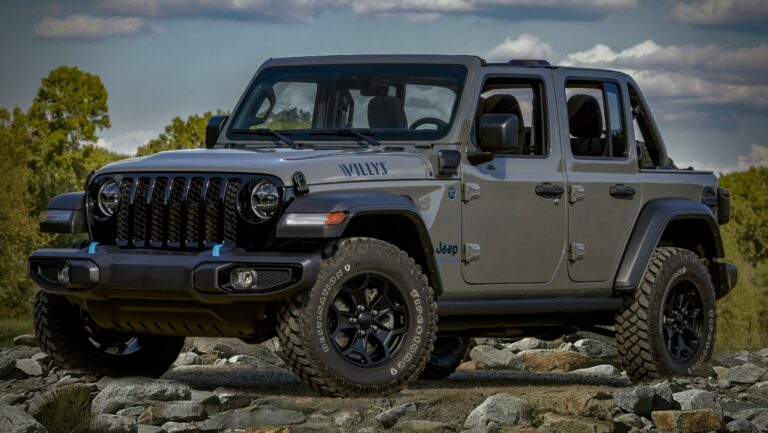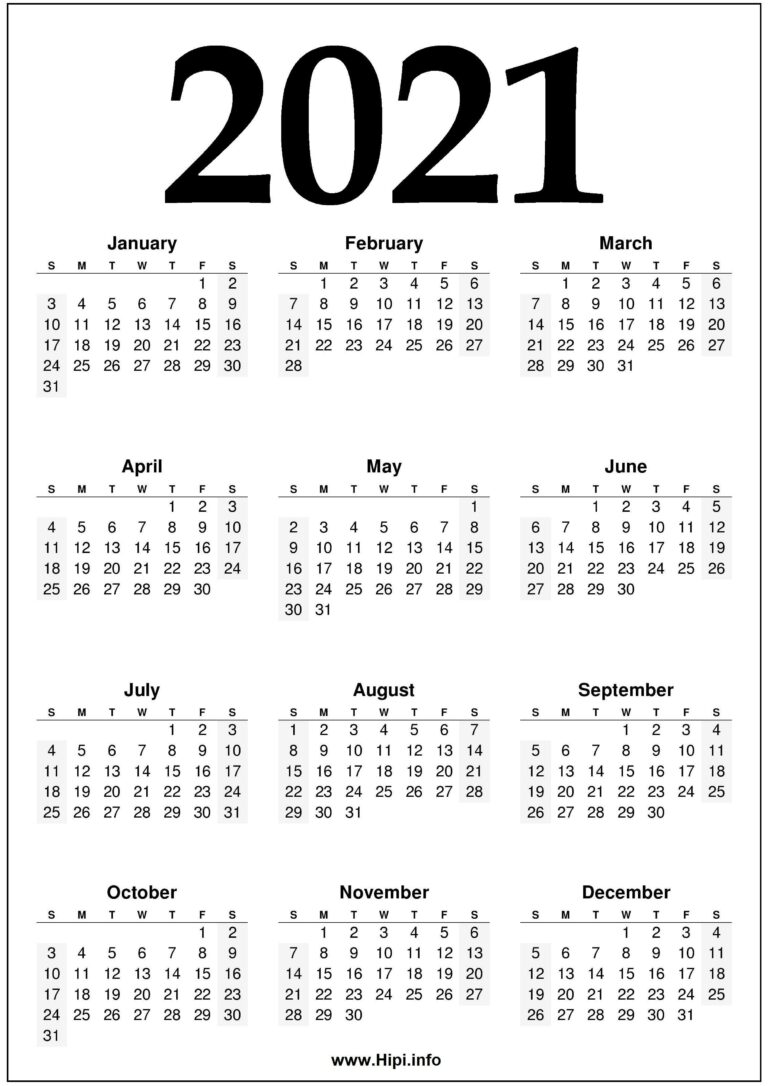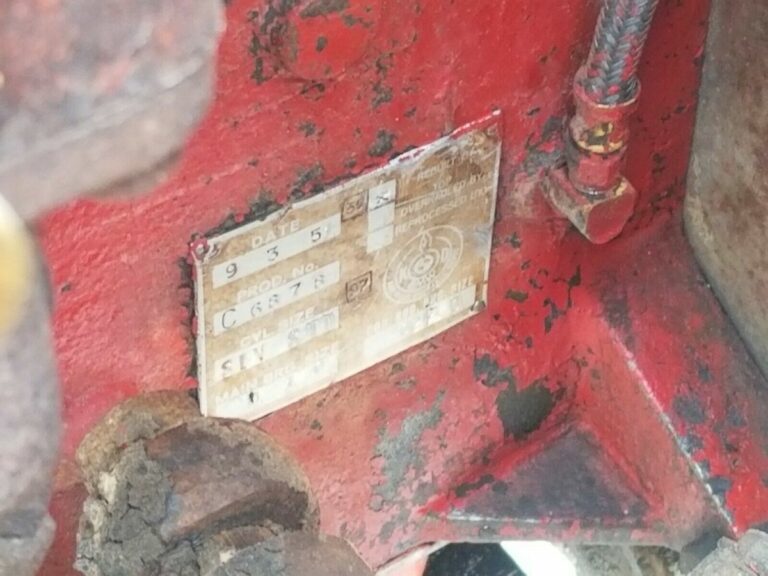93 Jeep Grand Cherokee: A Deep Dive into a Defining SUV
93 Jeep Grand Cherokee: A Deep Dive into a Defining SUV jeeps.truckstrend.com
Introduction: The Birth of a Modern Icon
The year 1993 marked a significant turning point in the automotive landscape with the introduction of the Jeep Grand Cherokee, internally known as the ZJ. Unveiled dramatically by driving through a plate-glass window at the 1992 North American International Auto Show, the ’93 Grand Cherokee wasn’t just another SUV; it was a revelation. Designed to replace the beloved but aging XJ Cherokee as Jeep’s flagship, the ZJ aimed higher, blending the rugged capability Jeep was famous for with unprecedented levels of luxury, comfort, and on-road refinement.
93 Jeep Grand Cherokee: A Deep Dive into a Defining SUV
At a time when SUVs were primarily utilitarian, the ’93 Grand Cherokee dared to offer premium features, a smoother ride courtesy of its coil-spring suspension (a departure from the XJ’s leaf springs in the rear), and a more sophisticated unibody construction. It quickly set a new benchmark for what a sport utility vehicle could be, paving the way for the luxury SUV segment that dominates today’s market. For many, the ’93 Grand Cherokee represents the perfect blend of classic Jeep ruggedness and modern convenience, making it a beloved classic that continues to command respect on and off the road.
The Dawn of a Legend: What Made the ’93 ZJ Special?
The 1993 Jeep Grand Cherokee arrived with a host of innovations that distinguished it from its predecessors and competitors. Its foundational strength came from a monocoque (unibody) chassis, which provided a stiffer, lighter, and more car-like ride compared to traditional body-on-frame designs. This, combined with its revolutionary Quadra-Coil suspension system – featuring coil springs at all four corners – offered a level of ride comfort and handling previously unseen in a Jeep, while still retaining impressive articulation for off-road prowess.
Key Features and Design Philosophy:
- Unibody Construction: Enhanced structural rigidity, improved safety, and reduced noise, vibration, and harshness (NVH).
- Quadra-Coil Suspension: Four-wheel coil springs provided a significant leap in ride quality and off-road articulation, crucial for its dual-purpose mission.
- Aerodynamic Styling: While unmistakably a Jeep, its smoother lines were a departure from the boxy XJ, hinting at its more refined nature.
- Interior Refinement: Stepping inside, buyers found a far more upscale cabin than previous Jeeps, with improved ergonomics, better materials, and a focus on passenger comfort.
![]()
The ’93 ZJ launched with two robust engine options and sophisticated four-wheel-drive systems, catering to a wide range of buyers from daily commuters to serious off-road enthusiasts.
Under the Hood: Engine and Drivetrain Options
The powertrain options for the ’93 Grand Cherokee were a major selling point, offering a blend of reliability and power that suited its versatile character.

Engine Choices:
-
4.0L High Output (HO) Inline-6 (AMC 242):
- Specifications: 190 horsepower and 225 lb-ft of torque.
- Characteristics: This engine is legendary for its bulletproof reliability, strong low-end torque, and ease of maintenance. It’s a workhorse that can endure hundreds of thousands of miles with proper care. It provides ample power for daily driving and light to moderate off-roading.
- Common Issues: Known for minor oil leaks (valve cover, rear main seal), exhaust manifold cracks, and occasional cooling system issues if not properly maintained.

-
5.2L V8 (318 Magnum):
- Specifications: 220 horsepower and 285 lb-ft of torque.
- Characteristics: Introduced later in the ’93 model year, the 5.2L V8 offered a significant boost in power and torque, making the Grand Cherokee feel much more effortless, especially when towing or accelerating. It provided a more premium driving experience.
- Common Issues: Can suffer from plenum gasket leaks, distributor shaft wear, and is more susceptible to cooling system problems (e.g., radiator, water pump, fan clutch) due to higher heat output. Fuel economy is notably worse than the 4.0L.
Transmission Choices:
- Automatic: Both engines were primarily paired with automatic transmissions.
- AW4 (Aisin-Warner 4-speed automatic): Paired with the 4.0L I6, known for its extreme durability and reliability.
- 42RE (Chrysler 4-speed automatic): Initially paired with the 5.2L V8. This transmission can be more prone to solenoid issues and requires diligent fluid maintenance.
- 46RH (Chrysler 4-speed automatic): A heavier-duty version that replaced the 42RE for V8 models later in the ZJ production, generally more robust.
Transfer Cases:
The ’93 Grand Cherokee offered two distinct four-wheel-drive systems, catering to different needs:
- Command-Trac (NP231): Available only with the 4.0L I6 and 2WD models. A part-time 4WD system, meaning it should only be engaged on loose surfaces (dirt, snow, ice) to prevent drivetrain binding. Offers 2H, 4H, and 4L. Simple and robust.
- Select-Trac (NP242): Available with the 4.0L I6. A full-time/part-time system offering 2WD, 4WD Part-Time, 4WD Full-Time, N (Neutral), and 4WD Low. The "4WD Full-Time" mode is excellent for varied conditions as it allows the vehicle to be driven on pavement without binding. Highly versatile.
- Quadra-Trac (NP249): Standard with the 5.2L V8, optional with the 4.0L I6. A full-time 4WD system with a viscous coupling that automatically distributes torque between the front and rear axles. Offers 4WD Full-Time and 4WD Low. While convenient, the viscous coupler is a common failure point as it ages, leading to a "locked" feeling, especially when turning, and can be expensive to replace.
Trim Levels and Features: A Glimpse of Luxury and Utility
The ’93 Grand Cherokee was available in three primary trim levels, each offering a different blend of features and luxury.
-
Base (or "SE" in some markets):
- The entry-level model, typically identified by its black lower body cladding and basic interior.
- Standard features included cloth upholstery, manual windows and locks, and a basic stereo.
- Primarily focused on functionality and affordability, often found with the 4.0L I6 and 2WD or Select-Trac.
-
Laredo:
- The mid-range trim, offering a significant upgrade in comfort and convenience.
- Distinguished by body-colored lower cladding, alloy wheels, and a more refined interior.
- Features often included power windows and locks, air conditioning, cruise control, power mirrors, and upgraded cloth or optional leather seating.
- A popular choice for its balance of features and value.
-
Limited:
- The pinnacle of the ’93 Grand Cherokee lineup, designed to compete with luxury SUVs.
- Characterized by monochromatic paint schemes, unique alloy wheels, chrome accents, and a plush interior.
- Standard luxury features included leather seating, power-adjustable front seats, automatic climate control, a premium Infinity sound system, keyless entry, fog lights, and a power sunroof.
- The Limited often came with the 5.2L V8 and Quadra-Trac, offering the most powerful and luxurious experience.
For its time, the Limited trim was genuinely innovative, bringing features previously reserved for high-end sedans to an SUV, signaling Jeep’s ambition to redefine the segment.
Owning a ’93 Grand Cherokee Today: Important Considerations
Owning a 30-year-old vehicle comes with its unique set of challenges and rewards. The ’93 ZJ, despite its robust build, is no exception.
Maintenance and Common Issues:
- Rust: The ZJ is susceptible to rust, especially in areas with road salt. Check rocker panels, floorboards, rear quarter panels, and suspension mounting points thoroughly.
- Electrical Gremlins: Power windows, dashboard lights, blend door actuators (for HVAC), and various sensors can fail due to age. Many fixes are DIY-friendly but require patience.
- Cooling System: Particularly critical for V8 models. Radiators, water pumps, fan clutches, and hoses should be inspected and replaced proactively. Overheating can lead to costly engine damage.
- Transmission Issues: The 42RE (V8) can develop solenoid issues or hard shifting if not properly maintained. Regular fluid and filter changes are crucial.
- Steering & Suspension: Worn tie rod ends, ball joints, control arm bushings, and track bar bushings can lead to loose steering or the dreaded "death wobble" (a violent shaking of the front end, usually after hitting a bump). Most parts are readily available and relatively inexpensive to replace.
- NP249 Transfer Case: The viscous coupler in the Quadra-Trac system is a known failure point. A failing coupler will cause binding during turns, especially at low speeds, and can lead to premature wear of other drivetrain components. Replacement or conversion to an NP231/NP242 is a common solution.
- Fuel Economy: Be realistic. The 4.0L typically gets 15-18 MPG combined, while the 5.2L V8 is often in the 12-15 MPG range.
Practical Advice and Actionable Insights:
- Proactive Maintenance: Don’t wait for things to break. Regular fluid changes (engine oil, transmission, transfer case, differentials), belt and hose inspections, and suspension checks will save you money in the long run.
- Parts Availability: Fortunately, due to the Grand Cherokee’s popularity and shared components with other Chrysler/Jeep vehicles of the era, most replacement parts are readily available and often affordable through aftermarket suppliers.
- Community Support: A vast online community of ZJ owners exists (forums, Facebook groups) that can provide invaluable advice, troubleshooting tips, and DIY guides.
- DIY Potential: Many common repairs are well within the scope of a home mechanic with basic tools, making the ZJ a rewarding vehicle for those who like to wrench.
The Grand Cherokee as an Off-Road Icon and Daily Driver
The ’93 Grand Cherokee’s unique combination of unibody strength, coil-spring suspension, and robust powertrain options cemented its reputation as a highly capable off-road vehicle right out of the box. Its relatively short wheelbase and excellent approach/departure angles make it surprisingly nimble on trails.
For off-road enthusiasts, the ZJ is a popular platform for modification. Common upgrades include:
- Lift Kits: Ranging from 2-inch budget boosts to 6.5+ inch long-arm systems for increased ground clearance and tire size.
- Larger Tires: To improve traction and obstacle clearance.
- Aftermarket Bumpers & Skid Plates: For protection and recovery points.
- Locker Differentials: To enhance traction in extreme conditions.
Despite its off-road prowess, the ’93 Grand Cherokee also excels as a daily driver. Its comfortable interior, relatively quiet ride (especially compared to older Jeeps), ample cargo space, and respectable towing capacity (up to 5,000 lbs with the V8) make it a versatile family vehicle or a reliable commuter, provided it’s well-maintained.
Buying Guide: What to Look For When Purchasing a ’93 ZJ
If you’re considering purchasing a ’93 Grand Cherokee today, a thorough inspection is paramount.
- Check for Rust: This is often the biggest killer of ZJs. Pay close attention to rocker panels, floorboards (lift carpets), rear quarter panels, and frame rails (if applicable to subframes/reinforcements).
- Engine Condition:
- 4.0L: Listen for excessive valvetrain noise, knocking, or unusual exhaust sounds. Check for oil leaks.
- 5.2L: Listen for plenum gasket issues (hissing sound, rough idle), check for oil consumption, and ensure the cooling system is robust.
- Transmission & Drivetrain:
- Test drive to check for smooth shifts (no flaring, harshness).
- Engage 4WD (both 4H and 4L) to ensure it works. Listen for grinding or binding from the transfer case, especially on the NP249 (Quadra-Trac) when turning sharply.
- Check differential fluid levels and for leaks.
- Suspension & Steering:
- Look for worn bushings, leaky shocks, and listen for clunks or pops over bumps.
- Check for play in the steering wheel and any signs of "death wobble" during the test drive.
- Electricals: Test every switch and function: power windows, door locks, radio, HVAC, lights, cruise control, gauges.
- Interior: Check for excessive wear, tears in upholstery, and water leaks (especially around the sunroof).
Obtain service records if possible. A well-documented history of maintenance is a strong indicator of a cared-for vehicle.
Price Guide: ’93 Jeep Grand Cherokee Valuation
As a classic vehicle, the value of a ’93 Grand Cherokee varies significantly based on condition, mileage, trim level, and modifications.
| Aspect | Original MSRP (Approx. 1993) | Current Market Value (2023-2024, US$) | Notes |
|---|---|---|---|
| Base Model (2WD) | $19,000 – $21,000 | $1,500 – $3,500 | Lower end for high-mileage, rough condition; higher for well-maintained examples. |
| Laredo (4WD) | $22,000 – $25,000 | $2,500 – $6,000 | Most common trim. Value depends heavily on engine (4.0L generally holds value better due to reliability), condition, and mileage. |
| Limited (4WD) | $26,000 – $30,000+ | $3,500 – $8,000+ | Top-tier models with V8 and full options can fetch higher prices, especially if meticulously maintained or low mileage. Show-quality examples can exceed this. |
| Exceptional/Restored | N/A | $8,000 – $15,000+ | Pristine, low-mileage, or professionally restored examples, particularly Limited V8s, can command collector prices. |
| Factors Influencing Price | Condition: Rust-free, mechanically sound. | Mileage: Lower mileage increases value. Engine: 4.0L often preferred for reliability, but V8 for power. Trim Level: Limited generally commands highest prices. Modifications: Can add or detract value depending on quality and buyer preference. Location: Market demand varies regionally. |
Disclaimer: These are approximate values and can fluctuate based on market demand, regional differences, and the specific condition of the vehicle.
Conclusion: An Enduring Legacy
The 1993 Jeep Grand Cherokee stands as a monumental achievement in automotive history. It wasn’t just a new model; it was a paradigm shift that redefined the SUV, proving that rugged capability and luxurious comfort could coexist. Its pioneering spirit, durable engineering, and timeless design have ensured its place as a beloved classic among enthusiasts and a practical, affordable option for those seeking a versatile SUV today.
Whether you’re an off-road adventurer, a daily commuter looking for a reliable and comfortable ride, or a collector appreciating automotive milestones, the ’93 ZJ offers a compelling package. While owning one today requires a commitment to proactive maintenance, the rewards — a capable, comfortable, and iconic vehicle — are well worth the effort. The ’93 Grand Cherokee isn’t just a vehicle; it’s a piece of American automotive heritage that continues to conquer roads and trails with enduring charm.
Frequently Asked Questions (FAQ) about the ’93 Jeep Grand Cherokee
Q1: Is the ’93 Grand Cherokee reliable?
A1: Yes, especially models equipped with the 4.0L Inline-6 engine, which is renowned for its durability and longevity. Like any 30-year-old vehicle, regular maintenance is key, and some components (like the NP249 transfer case’s viscous coupler or certain electricals) may require attention due to age.
Q2: What’s the best engine for a ’93 ZJ?
A2: The "best" engine depends on your priorities. The 4.0L I6 is highly favored for its exceptional reliability, ease of maintenance, and strong low-end torque. The 5.2L V8 offers more horsepower and torque for better acceleration and towing, but generally has worse fuel economy and can be more prone to specific issues like cooling system stress and plenum gasket leaks.
Q3: Are parts hard to find for a ’93 Grand Cherokee?
A3: No, parts are generally very easy to find. Due to the ZJ’s popularity and the sharing of components across various Chrysler/Jeep platforms of that era, both OEM and aftermarket parts are widely available and often affordable.
Q4: Is the ’93 Grand Cherokee good for off-roading?
A4: Absolutely. The ’93 ZJ is highly regarded for its off-road capabilities right out of the factory, thanks to its solid axles, coil-spring suspension, and robust 4WD systems. It’s also a very popular platform for off-road modifications, with a vast aftermarket supporting lifts, armor, and other upgrades.
Q5: What is "death wobble" and is it common in the ’93 ZJ?
A5: "Death wobble" is a violent, uncontrolled oscillation of the front axle, usually triggered by hitting a bump at speed. While not exclusive to ZJs, it can occur if front suspension and steering components (like tie rod ends, track bar bushings, and ball joints) are worn or if the alignment is off, especially on lifted vehicles. It’s fixable by replacing worn parts and proper alignment.
Q6: What’s the difference between Select-Trac and Quadra-Trac?
A6:
- Select-Trac (NP242): A versatile system offering both part-time (for off-road/loose surfaces only) and full-time (for all surfaces, including pavement) 4WD modes, plus 2WD. It gives the driver more control.
- Quadra-Trac (NP249): A full-time 4WD system with a viscous coupling that automatically distributes power. It’s convenient as it can be used on pavement constantly, but the viscous coupler is a common failure point as the vehicle ages.



